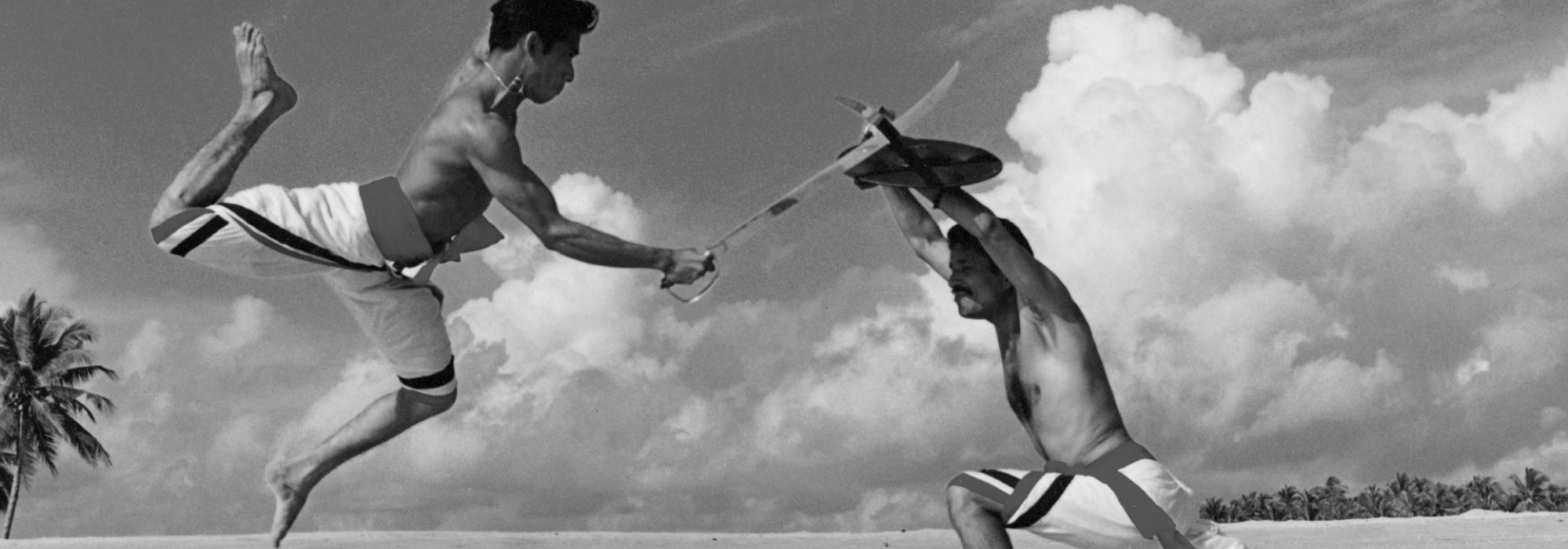For the primitive man, who led his life like an animal, hunting was the primary means of livelihood. The current article examines the process by which a rustic activity such as hunting helped in the evolution of sophisticated theatrical art forms. We will need to closely examine the relation between reality and the ideality, livelihood and life, the worldly and the sublime while dealing with this subject. When we question ourselves thus, we might be pleasantly surprised with the discoveries we make.
In today’s colloquial language, the word 'ranga' has come to mean a platform for performing arts or a proscenium stage for dance. However, the word ‘ranga’ originally meant battle-field and the training ground for wrestlers. In the Bhagavata-purana, for example, when Krishna enters the wrestling ground along with his brother Balarama, to fight Canura and Mushtika, the phrase ‘rangam gatassagrajah’ is used. Here, the word ‘ranga’ is used to refer to the wrestling ground. In addition to this, the word ‘anka’, which we use in the context of the main act of a play, originally meant a battle-field or a wrestling ground too. ‘Anka’ also means the portrayal of a mock-war scene or the scene of a real war. Moreover, among the ten kinds of visual performing arts, or the dasha-rupakas which Bharata speaks of in the Natyashastra, ‘anka’(also called ‘utsrushtikaanka’) is a variety. An anka has the portrayal of sorrow following a war as its main theme. ‘Utsrushti’ means relief or giving up. Thus, utsrushtikaanka can mean relief from a war or giving up a war ( Natyashastra, Chapter 18, 94-100). Hence, the scholar Sediyapu Krishna Bhatta is of the opinion that ‘anka’ has its etymological and historical meaning in warfare.
Many scholars opine that rupaka-saamaanya or any theatrical presentation, which is the core aspect of the Natyashastra, is in fact the culminating portion of the celebrations associated with the victory in a battle. Several centuries ago, the Indramaha or the Indradhvajotsava was an important festival of the Sharat-kaala or the autumnal season in India. This festival commemorated Indra’s victory in the battle between the demi-gods (suras) and the demons (asuras). The battle between the suras and the asuras is a metaphor which suggests the contrast between opposites such as light and darkness, knowledge and ignorance, life and death, etc. The Indra-dhvaja used in this festival is the 'jarjara’ of the Natyashastra. Jarjara is also the weapon which Indra used to subdue the demons who tried to cause hindrance to the presentation of the theatrical production. This mythological incident was enacted during the festival to entertain the audience.
The vruttis or the stage-mannerisms which the Natyashastra speaks of are by-products of warfare. The works of the scholar Dr. V. Raghavan is a good reference for this matter. According to the Natyashastra, the mythical episode of Mahavishnu’s combat with the demons Madhu and Kaitabha gave rise to the arabhati, sattvati, bharati and the kaishiki vruttis. This is another link between the battle-field and the theater art. There is also the legend that the four vruttis, which were put into the four Vedas by Brahma, found their reemergence in the fifth veda, the Natyashastra. The Natyashastra also states that the vruttis were borrowed from the dance of Shiva. Since the vedic times, Shiva is known to be the deity presiding over battles. He is thus the master and the originator of several divine arrows such as the pashupata. Skanda, his son, is also the commander-in-chief of the divine armies. This shows that Shiva too serves as a link between the battle-field and the theater art. Vṛttis are essentially the activities of the mind, body and the speech. Bhojaraja defines it thus,
‘या विकासेथ विक्षेपे सङ्कोचे विस्तरे तथा, चेतसो वर्तयित्री स्यात् सा वृत्तिः…’
Dr. V. Raghavan is of the view that the four vruttis were born out of the battle-styles of four different tribes of ancient India. The bharatī vrutti originated from the Bharata clan of Northern India, arabhati from the arabhati tribe of Eastern India, sattvati from the Sattvatis of Western India and the kaishiki from the Krutakaishika clan of Southern India. The tenth chapter of the Natyashastra too proves the same, thus establishing the close link between the battle field and the theater art.
The movements in the battle-field and in warrior training have had their influence on the most fundamental aspects of dance, the sthaanaka (standing postures), chaari (movements of the legs and the lower body), nrutta hastas (movement of the arms and the upper body) and the rechakas (finer embellishments).
For example, alida is a sthaanaka which is used to depict a defensive pose and pratyaalida to depict an offensive stance. They have been adapted in dance to closely match the similar poses which would occur naturally during a combat on the battle-field. Influences of the martial art forms such as kalaripayattu and North Indian regional forms such as puruliya, mayurabhaanj and chav dances are entirely the by-products of war techniques. The mandalas which are defined in the Natyashastra for the depiction of war scenes certainly draw their inspiration from the wars.
Karanas in the pure dance, i.e., nrutta, are equivalents of words and Angahaaras are equivalents of sentences in a language. These fundamental units of dance, the Karanas have several aspects of the movements in battle-filed and hunting in them. Among the 108 Karanas defined in the Natyashastra, the following stand as good examples as those inspired from war : bhujanga traasitam, urdhvajaanu, vruschika, danḍarecitam, atikraanta, apakraanta, gangaavatarana. The primitive man, having got inspired by the mannerisms of the animals and birds in nature, has added the following to the repertoire of dance: gajakreditakam, karihastam, garudaplutam, naagaapasarpitam, simhaakarshitam, karihastam, vrushabhakriditam and harinaplutam.
(To be continued)
An adaptation of the kannada article by Arjun Bharadwaj
















































